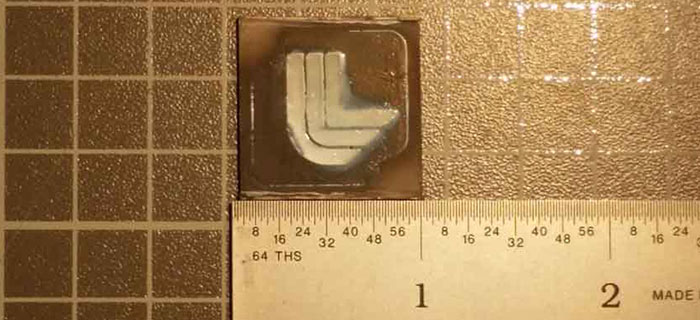Electrophoretic deposition (EPD) is used as a method of coating material by depositing particles of various substances onto the surfaces of various manufactured items. It has been an extant technology for a century. EPD has been used to deposit a wide range of materials onto surfaces since its earliest use: including ceramics, metals, polymers and even living cells. This is a process that works well, but it is limited as EPD can only deposit material across a whole surface, not in specific locations. Until now.
Researchers at Lawrence Livermore National Laboratory have created a technique that they have named Light-directed Electrophoretic Deposition, which uses photoconductive electrodes and DC electrical fields to dynamically pattern the surface material. This allows the build up of material in targeted areas where the light comes in to contact with the photo-conductor’s surface.
“We have presented a novel electrophoretic deposition technique based on using light to pattern materials on a photo-conductive layer. This represents a large step in advancing electrophoretic deposition as a method of fabricating complex 3D patterned composites,” said Andrew Pascall, research engineer and lead author.
The researchers used Light-directed Electrophoretic Deposition to produce an alumina ceramic-tungsten nano-particle composite. First, the tungsten nano-particles were deposited across the photo-conductive surface. They were then illuminated via a laser cut aluminum mask. Next, a different shaped mask was substituted to deposit the ceramic material. Soon, the aluminum masks will be replaced by a digitally projected mask similar to those found in DLP televisions, for a completely automated deposition system.
The potential for Light-directed Electrophoretic Deposition is to elevate traditional EPD from a single layer, single material coating process to an additive manufacturing technique that allows for composites that cannot be formed using other methodologies. That potential has vast ramifications in terms of applications. For example, void areas can be precisely created to control polymer material behaviours for energy absorption or within cellular material, allowing the creation of veins and blood vessels in manufactured and bio-printed human organs.
The research is the subject of a paper, “Light-Directed Electrophoretic Deposition: A New Additive Manufacturing Technique for Arbitrarily Patterned 3D Composites,” published in the journal Advanced Materials.



